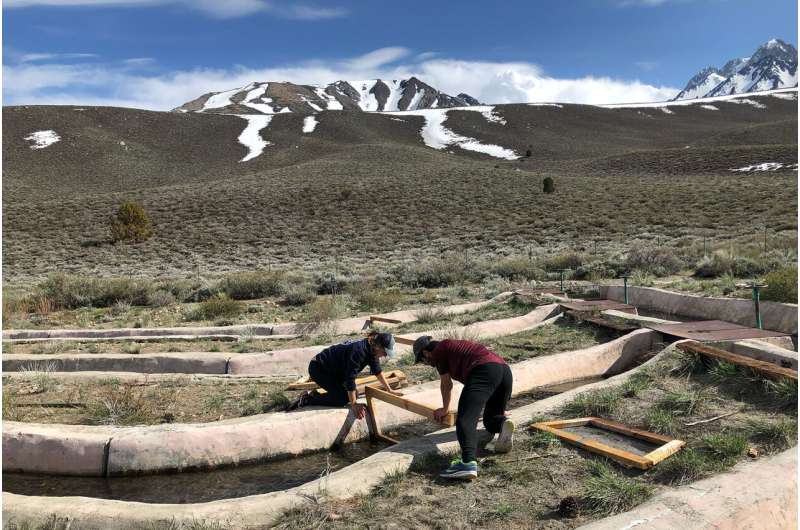California's mountain streams and the delicate ecosystems they support face an uncertain future due to climate change. A new study by researchers at the University of California, Berkeley is providing valuable insights into how these ecosystems might respond to a warmer, drier climate.
The culprit? Less snowfall in the Sierra Nevada. Climate change is expected to bring less snow, leading to smaller snowpacks and earlier snowmelt. This, in turn, will result in streams reaching their annual low-flow conditions much sooner – an average of six weeks earlier by 2100.
To understand the potential consequences of this altered flow regime, the researchers built a series of artificial streams. These channels, located near Mammoth Lakes, mimicked the behavior of headwater streams under present-day conditions and simulated future drought scenarios.
The study, published in the Proceedings of the National Academy of Sciences, revealed that the timing of low-flow events significantly impacts the life cycles of aquatic organisms within the streams. The abundance of various species also shifted, with populations of midges, a dominant insect group, nearly doubling under drought conditions.
Interestingly, the study found that the stream ecosystems displayed a surprising degree of resilience. This resilience seems to stem from biodiversity – the presence of a variety of species that respond differently to changing conditions.
"It's like having a balanced financial portfolio," explains lead author Kyle Leathers. "The more species a river has, the more likely it is that warming won't drastically impact an ecosystem process crucial for the broader food web."
Healthy ecosystems rely on predictable seasonal rhythms. Aquatic insects, for example, reproduce and grow based on water temperature and nutrient availability at specific times of year. Predators like fish and birds rely on these predictable insect populations for food.
The researchers, led by senior author Albert Ruhi, were particularly interested in how earlier low-flow conditions might disrupt these natural rhythms. Studying these subtle changes within natural waterways would be nearly impossible, but the artificial streams provided the perfect setting.
The unique system, built by the U.S. Fish and Wildlife Service and maintained by UC Berkeley's aquatic research lab, uses natural water from nearby Convict Creek. Each channel is roughly the size of a small mountain stream and allows for natural colonization of insects, algae, and other organisms.
"This is the only system at this scale that uses natural, non-recirculated water derived from snowmelt in the watershed," says Ruhi. "It would be very difficult to replicate this in a natural setting."
The experiment involved manipulating the flow in different channels. Three channels experienced low-flow conditions starting in early August, which is typical for the region. Another set experienced low-flow three weeks earlier, and a final set had low-flow conditions six weeks ahead of schedule.
The researchers closely monitored the streams throughout the summer, measuring water temperature, dissolved oxygen levels, and insect populations. They found that the channels with earlier low-flow responded quickly with rising temperatures, changes in algae growth, and earlier insect emergence.
These changes could have cascading effects throughout the ecosystem. Earlier emergence of insects could impact fish populations, but it could also benefit terrestrial predators like birds, bats, and lizards that rely on these insects for food. The study observed an increase in Brewer's blackbirds feeding on midges in the streams with earlier low-flow.
"Even slight changes can have significant consequences," says Ruhi. "The earlier emergence of insects due to early snowmelt, leading to more abundant prey for birds, is a surprising example of cross-ecosystem linkages we wouldn't have captured in a lab setting. It highlights the importance of timing in ecological interactions."
The research team is now building on this work to understand how climate change might alter food webs in aquatic ecosystems. They're exploring the possibility of both predator-prey mismatches due to differing responses to climate change and the emergence of novel, unforeseen ecological relationships.




0 Comments